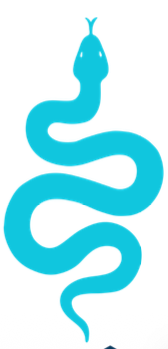Bites & Stings
Most wounds caused by animal or human bites can be treated with basic first aid techniques.
Depending on whether its a dog, cat or human, typical bite wounds cause a puncture, laceration or abrasion.
GENERAL TREATMENT
- Wearing gloves clean the affected area with warm running water.
- Inspect the wound for sharp object such as teeth and remove if you are able to do so.
- Dry the wound and cover with a sterile dressing.
Seek medical advice if:
- The wound is or at risk of becoming infected.
- It will leave an unwelcome scar.
- A child has been bitten.
- The bite is to the hands, feet, genitals, face or neck
In some case the bite may cause amputation. The limb should be placed in a sterile bag (bandage wrapper), wrapped in a cloth (triangular bandage) and be placed in ice.
STINGS
Around the UK there are several marine creatures that sting such as weever fish, jellyfish, Portuguese man-of-war, sea urchins and stingrays.
The treatment of each is very similar but we’re going to look at the most common.
WEEVER FISH
Weever fish are sandy coloured and lie buried just below the sand. They have poisonous spines on their back and gills which when stood on cause:
- Severe pain and itching
- Swelling and redness
- Numbness and tingling
- Nausea and vomiting
- Headache
- Joint ache
- Abdominal cramps
- Dizziness
- Tremors (shaking)
Some people have a more serious reaction to the sting including:
- An abnormal heart rhythm (arrhythmia)
- Shortness of breath
- Weakness and paralysis
- Seizures (fits)
- A drop in blood pressure
- Become unresponsive
TREATMENT
- Call 999 / 112 if they’ve had a serious reaction.
- Bathe the affected area in the hottest water tolerable for between 30 – 90 minutes.
- This can be repeated as necessary.
- Be careful not to burn the skin.
- Clean the wound with soapy water.
- Rinse with running water.
- Do not cover the wound.
JELLYFISH
 The tentacles on the underside of a jellyfish are covered with small poisonous sacs called nematocysts which produce a nasty sting when touched.
The tentacles on the underside of a jellyfish are covered with small poisonous sacs called nematocysts which produce a nasty sting when touched.
Symptoms of a jellyfish sting include:
- Severe pain
- Itching with a rash
- Raised welts (raised circular areas on the skin)
- Nausea & Vomiting
- Diarrhoea
- Muscle spams & abdominal pains
- Numbness and tingling
- Swollen lymph nodes
TREATMENT
- Treat out of the water removing any tentacles with tweezers.
- • Soak in hot water (without burning the skin) for at least 30 minutes.
Call 999 / 112 if:
- Problems with breathing / swallowing
- Chest pains
- Person stung is a child or elderly
- Stung to a large part of the body including genitals
INSECT STINGS
Many insects sting as a defence mechanism by injecting venom into the skin.
Insect stings usually cause swelling and inflammation and treatment doesn’t normally need medical assistance:
- Remove any venomous sac (bees) using tweezers
- Wash area with soapy water
- Cool the area using cold flannel or ice
- Raise and rest affected areas.
Call 999 / 112 if:
- Person goes into anaphylactic shock
- Has difficulty breathing (wheezing)
- Nausea, vomiting or diarrhoea
- Fast heart rate
- Dizziness or feeling faint
- Swollen face or month
- Confusion, anxiety or agitation
SNAKE BITES
 Adders (vipers) are the only wild venomous snakes in the Uk.
Adders (vipers) are the only wild venomous snakes in the Uk.
Adders can sometimes bite without injecting venom (dry bite). This causes mild pain.
If venom is released symptoms will include:
- Swelling and inflammation
- Nausea and vomiting
- Dizziness and feeling faint
TREATMENT
- Call 999 / 112
- Try and identify the snake (correct anti-venom can be administered at hospital)
- Keep affected area still to avoid spread of venom
- Loosen clothing and remove any jewellery
Version: Version: 1.04

